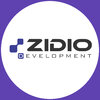Filter interviews by
Rnr Datalex Interview Questions and Answers
10 Interview questions
Change requests should be evaluated for impact, feasibility and priority before being approved or rejected.
Evaluate the impact of the change request on the project scope, timeline, budget and resources.
Assess the feasibility of implementing the change request and identify any potential risks or challenges.
Prioritize the change request based on its importance and urgency.
Communicate the decision to approve or rejec...
ERP stands for Enterprise Resource Planning. It is a software system that helps organizations manage their business processes.
ERP integrates various business functions such as finance, HR, inventory management, and customer relationship management.
It provides a centralized database that can be accessed by different departments within an organization.
ERP systems automate many manual processes, reducing the risk of ...
Bootstrap has predefined breakpoints for responsive web design.
Bootstrap has four predefined breakpoints: xs, sm, md, and lg.
These breakpoints are used to define the layout and behavior of elements at different screen sizes.
For example, the xs breakpoint is for extra small screens, sm for small screens, md for medium screens, and lg for large screens.
Developers can use these breakpoints to create responsive design...
You can use CSS to make a word look italic without using the tag.
Use the CSS property 'font-style: italic;' to make the word italic.
Apply the 'font-style' property to the desired element or class.
Example: .italic-word { font-style: italic; }
To manage bootstrap default CSS with your code, you can override or customize the default styles using your own CSS.
Use custom CSS classes to override specific styles
Modify the Bootstrap variables to customize the default styles
Create a separate CSS file to add your own styles and include it after the Bootstrap CSS file
Use !important to prioritize your custom styles over Bootstrap styles
The current version of Bootstrap is 5.1.0.
Bootstrap 5.1.0 is the latest version as of now.
It was released on August 19, 2021.
Bootstrap 5 is a popular front-end framework for building responsive websites and web applications.
It provides a wide range of pre-built components and utilities for faster and easier web development.
Some of the key features of Bootstrap 5 include a new grid system, updated form controls, an...
Use CSS flexbox to manage blocks with same height
Apply display: flex; to the container element
Set flex-grow: 1; on each block to make them expand equally
Use overflow: auto; to handle excessive content within a block
To manage conflicting JavaScript on a page, we can use various techniques like namespacing, modularization, and event delegation.
Use namespacing to encapsulate code and prevent conflicts
Modularize code into smaller, reusable components
Use event delegation to handle events on dynamically loaded elements
Avoid global variables and use local scopes
Use a JavaScript module bundler like Webpack to manage dependencies
Media queries are CSS techniques used to apply different styles based on the characteristics of the device or viewport.
Media queries allow us to create responsive designs that adapt to different screen sizes and devices.
Bootstrap CSS provides a responsive grid system and predefined media queries to make it easier to create responsive web designs.
We can use Bootstrap's CSS classes like 'col-md-6' to define differen...
Display block takes up full width, table inline behaves like a table cell, and inline block allows for inline elements with block-level properties.
Display block: Takes up full width, starts on a new line
Table inline: Behaves like a table cell, does not start on a new line
Inline block: Allows for inline elements with block-level properties
Rnr Datalex Interview Experiences
2 interviews found
Interview Questionnaire
3 Questions
- Q1. How to handle change request?
- Ans.
Change requests should be evaluated for impact, feasibility and priority before being approved or rejected.
Evaluate the impact of the change request on the project scope, timeline, budget and resources.
Assess the feasibility of implementing the change request and identify any potential risks or challenges.
Prioritize the change request based on its importance and urgency.
Communicate the decision to approve or reject the...
- Q2. What is erp?
- Ans.
ERP stands for Enterprise Resource Planning. It is a software system that helps organizations manage their business processes.
ERP integrates various business functions such as finance, HR, inventory management, and customer relationship management.
It provides a centralized database that can be accessed by different departments within an organization.
ERP systems automate many manual processes, reducing the risk of error...
- Q3. What roles you have performed earlier?
Interview Preparation Tips
Skills evaluated in this interview
I applied via Referral and was interviewed in Jan 2018. There were 3 interview rounds.
Interview Questionnaire
10 Questions
- Q1. How to manage bootstrap default css with your code
- Ans.
To manage bootstrap default CSS with your code, you can override or customize the default styles using your own CSS.
Use custom CSS classes to override specific styles
Modify the Bootstrap variables to customize the default styles
Create a separate CSS file to add your own styles and include it after the Bootstrap CSS file
Use !important to prioritize your custom styles over Bootstrap styles
- Q2. With out italic tag how you can make word italic look wise
- Ans.
You can use CSS to make a word look italic without using the tag.
Use the CSS property 'font-style: italic;' to make the word italic.
Apply the 'font-style' property to the desired element or class.
Example: .italic-word { font-style: italic; }
- Q3. What are the break points of bootstrap
- Ans.
Bootstrap has predefined breakpoints for responsive web design.
Bootstrap has four predefined breakpoints: xs, sm, md, and lg.
These breakpoints are used to define the layout and behavior of elements at different screen sizes.
For example, the xs breakpoint is for extra small screens, sm for small screens, md for medium screens, and lg for large screens.
Developers can use these breakpoints to create responsive designs tha...
- Q4. How we can manage the block with same height if one block have more data than others
- Ans.
Use CSS flexbox to manage blocks with same height
Apply display: flex; to the container element
Set flex-grow: 1; on each block to make them expand equally
Use overflow: auto; to handle excessive content within a block
- Q5. What is media queries and how can we mangane with bootstrap css
- Ans.
Media queries are CSS techniques used to apply different styles based on the characteristics of the device or viewport.
Media queries allow us to create responsive designs that adapt to different screen sizes and devices.
Bootstrap CSS provides a responsive grid system and predefined media queries to make it easier to create responsive web designs.
We can use Bootstrap's CSS classes like 'col-md-6' to define different lay...
- Q6. Which current version we are using the bootstrap
- Ans.
The current version of Bootstrap is 5.1.0.
Bootstrap 5.1.0 is the latest version as of now.
It was released on August 19, 2021.
Bootstrap 5 is a popular front-end framework for building responsive websites and web applications.
It provides a wide range of pre-built components and utilities for faster and easier web development.
Some of the key features of Bootstrap 5 include a new grid system, updated form controls, and imp...
- Q7. Display property attributes What is difference between display block and table inline and inline block
- Ans.
Display block takes up full width, table inline behaves like a table cell, and inline block allows for inline elements with block-level properties.
Display block: Takes up full width, starts on a new line
Table inline: Behaves like a table cell, does not start on a new line
Inline block: Allows for inline elements with block-level properties
- Q8. How we can manage the JavaScript on page when more JavaScript are lodedd and conflict with each other
- Ans.
To manage conflicting JavaScript on a page, we can use various techniques like namespacing, modularization, and event delegation.
Use namespacing to encapsulate code and prevent conflicts
Modularize code into smaller, reusable components
Use event delegation to handle events on dynamically loaded elements
Avoid global variables and use local scopes
Use a JavaScript module bundler like Webpack to manage dependencies
- Q9. Html and HTML5 difference css and CSS 3difference
- Q10. Discussion about salary structure and reason for leaving previous company
Interview Preparation Tips
Skills: Communication, Body Language, Problem Solving, Analytical Skills, Leadership, Presentation Skills, Time Management, Decision Making Skills
Duration: 1-3 Months
Skills evaluated in this interview
Top trending discussions






Interview questions from similar companies

Software Engineer Interview Questions & Answers
Apmosys Technologiesposted on 13 Jan 2021
I applied via Referral and was interviewed before Jan 2020. There was 1 interview round.
Interview Questionnaire
2 Questions
- Q1. Which technology are you using, is this latest?
- Ans.
We are using a variety of technologies, including some of the latest ones.
We are using React for our front-end development.
We are also using Node.js for our back-end development.
We are using Docker for containerization.
We are using Kubernetes for orchestration.
We are using AWS for cloud hosting.
We are constantly evaluating new technologies to see if they can improve our development process.
- Q2. If not then which technology can we use instead of this?
- Ans.
It depends on the specific requirements and constraints of the project.
Consider the project's goals and objectives
Evaluate the available technologies and their capabilities
Assess the project's budget and timeline
Consult with stakeholders and experts in the field
Examples: React vs Angular, MySQL vs MongoDB, Java vs Python
Interview Preparation Tips
Listen carefully and speak fluently.

I applied via Company Website and was interviewed before Dec 2019. There were 3 interview rounds.
Interview Questionnaire
1 Question
- Q1. Regarding OOPS, wordpress and laravel.
Interview Preparation Tips

Software Developer Interview Questions & Answers
Apmosys Technologiesposted on 12 Apr 2023
I applied via Recruitment Consulltant and was interviewed before Apr 2022. There were 3 interview rounds.

25 MCQ questions online with time limit
Create webapp . Frontend, Backend , data encryption

Senior Software Engineer Interview Questions & Answers
BigStep Technologiesposted on 24 Oct 2023
I applied via Approached by Company and was interviewed before Oct 2022. There were 3 interview rounds.

(1 Question)
- Q1. Find the duplicate items in the array.
- Ans.
Find duplicate items in array of strings.
Iterate through array and store each item in a hash set.
If item already exists in hash set, it is a duplicate.
(1 Question)
- Q1. Javascript basics questions
Skills evaluated in this interview

Software Developer Interview Questions & Answers
BigStep Technologiesposted on 19 Nov 2021
I applied via Naukri.com and was interviewed in May 2021. There was 1 interview round.
Interview Questionnaire
4 Questions
- Q1. To find if a number is Prime or not and optimise your written code.
- Ans.
Check if a number is prime and optimize the code.
Start by checking if the number is less than 2, in which case it is not prime.
Iterate from 2 to the square root of the number and check if any of them divide the number evenly.
If a divisor is found, the number is not prime. Otherwise, it is prime.
- Q2. Css question related to flex box, Grid and cross browser compatibility
- Q3. To call an API in react and optimise your written code.
- Ans.
To optimise API calls in React, use asynchronous functions and caching techniques.
Use async/await to handle API calls
Implement caching to reduce network requests
Use memoization to avoid unnecessary re-renders
Consider using a state management library like Redux
Use performance profiling tools like React DevTools
- Q4. Questions on JS concepts like Objects and Prototype Inheritance.
Interview Preparation Tips
Skills evaluated in this interview

Software Developer Interview Questions & Answers
BigStep Technologiesposted on 9 Feb 2022
I applied via Campus Placement
Online Coding Test included some aptitude questions, technical questions followed by 3 coding questions
(1 Question)
- Q1. My technical interview included an introduction about myself followed by my background, projects I've made, internships I've done, and in which language I was comfortable. and the interviewer asked me to w...
Interview Preparation Tips

Software Engineer Interview Questions & Answers
BigStep Technologiesposted on 15 Feb 2022
I applied via Campus Placement
In this round you have to clear Aptitude and Basic Coding
It is pure coding test which is conduct on hacker rank platform. You have to complete 4 question(1 easy + 2 medium + 1 hard)
(2 Questions)
- Q1. Coding question base on Sorting and Array
- Q2. Some of theory question base on your Project technology and DSA
(1 Question)
- Q1. Tell me about yourself.
Interview Preparation Tips

Software Engineer Interview Questions & Answers
BigStep Technologiesposted on 25 Aug 2021
Interview Questionnaire
1 Question
- Q1. Questions regards node js and java script concept, event loop, why node is single threaded, how event loop works in node js, database queries and previous work experience.
Interview Preparation Tips
Advice:
Answer question with confidence.
Feel comfortable with interviewer.
Rnr Datalex Interview FAQs
Some of the top questions asked at the Rnr Datalex interview -
Tell us how to improve this page.
Interview Questions for Popular Designations
- Senior Executive Interview Questions
- Senior Engineer Interview Questions
- Sales Executive Interview Questions
- Consultant Interview Questions
- Associate Software Engineer Interview Questions
- Graduate Engineer Trainee (Get) Interview Questions
- Senior Software Engineer Interview Questions
- System Engineer Interview Questions
- Show more
Interview Questions from Similar Companies
Rnr Datalex Reviews and Ratings
based on 25 reviews
Rating in categories
|
Software Developer
10
salaries
| ₹2.2 L/yr - ₹4.9 L/yr |
|
Quality Analyst
7
salaries
| ₹1.9 L/yr - ₹2.6 L/yr |
|
PHP Developer
6
salaries
| ₹1 L/yr - ₹3.6 L/yr |
|
Business Analyst
4
salaries
| ₹4.2 L/yr - ₹17.5 L/yr |
|
Operations Manager
4
salaries
| ₹4.2 L/yr - ₹4.2 L/yr |

Zidio Development

Northcorp Software

Accel Frontline

Elentec Power India (EPI) Pvt. Ltd.
- Home >
- Interviews >
- Rnr Datalex Interview Questions












